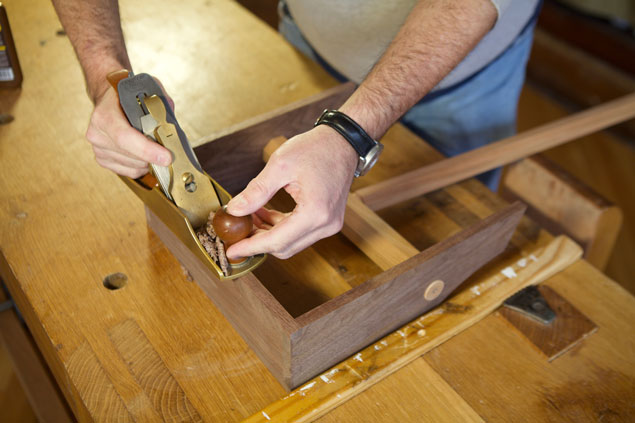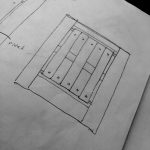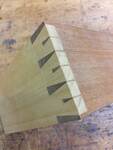We may receive a commission when you use our affiliate links. However, this does not impact our recommendations.
One of the great things about working for editor Megan Fitzpatrick is that she will laugh at your face and then (usually) go along with your crazy ideas. Case in point: the dovetailed dustpan in the June 2017 issue of Popular Woodworking Magazine.
When I submitted my sketches of a shop-made dustpan and asked to write an article, I strongly suspect she thought I was kidding. After all, you can buy a plastic dustpan for less than $10 at the home center. Why would you make one (dovetailed at the corners!), which might take a whole day to build?
Answer: As a teenager, I realized that I didn’t like plastic. Likely it was because my house was filled with old things that were wood, brass and glass. Something about plastic fails to inspire me. So when it comes to something I use everyday – cooking spoons, tableware, brooms, dustpans – I avoid plastic.
My design is based on vintage examples I’ve encountered during the last 25 years and, as a somewhat obsessive neatnik, I decided to improve on the standard commercial design. This wasn’t a difficult task.
Many commercial dustpans have a thick plastic lip at the front. Dust gets rammed against this lip and never makes it into the pan. As a woodworker, this was an easy fix: plane the front edge of the pan and make it sharp.
Second problem: The flat bottom of the dustpan fails to sit flat on the floor because it encounters debris, or the floor below isn’t flat. Solution: Attach a strip of wood to the rear of the underside of the pan (I used a dowel planed in half) to raise the back of the dustpan off the floor and force the front of the lip against the floor.
Both improvements make a significant difference as to how the pan functions.
There were also lots of little details to attend to while designing the dustpan. I wanted it to be freestanding and not fall over when at rest. And I wanted the pan to snap to vertical when raised off the floor. All in all, it was a fun project to prototype and build.
Why dovetail the corners? Why not? You can nail or screw the thing together if you prefer, but it’s always fun to cut a few quick dovetails.
— Christopher Schwarz
Here are some supplies and tools we find essential in our everyday work around the shop. We may receive a commission from sales referred by our links; however, we have carefully selected these products for their usefulness and quality.











As an engineer and a woodworker, loved your list of ‘must haves’. Can’t wait for my next issue of Pop Woodworking!
Love practical, timeless projects such as these. Can you design a wood cordless phone or computer keyboard next?
Would it have worked to extend the rear panel so it protruded a half inch below the bottom instead of the planed dowel?
Couldn’t make it out of basswood or poplar…. Noooo had to make it out of expensive walnut wood….
Would the addition of a V8 Chevy Big Block help? Might speed things up a bit; not to mention a manly noise whilst sweeping up. Of course, then you’d need fume extraction…
Now when have I ever laughed in your face? Oh…last week, probably. Never mind!